Debut Novel Renegade Out November 30th 2025!

Stop Trying to Make Her Redeemable: Writing Truly Morally Grey Heroines
A deep analysis of how to write truly morally grey heroines without forced redemption arcs, apologies or market-driven softening — and why female anti-heroes are treated differently from male ones.
ESSAY
Charlotte Pintilie
10/26/20257 min read
PART I — Opening Thesis & The Market Distortion


There is a persistent misconception that morally grey heroines “don’t work” because readers reject them — that readers are too sensitive, too moralistic, too invested in female likeability.
That is a comforting lie. It allows the industry to claim it is serving audience demand while in reality it is pre-emptively curating what the audience is even allowed to encounter. The problem is not readers; it is the market’s intervention before readers are ever given the choice..
Female characters are screened for moral acceptability at the editorial and acquisition stage in a way male characters are not. Female violence must be justified, softened, or excused. Female cruelty must be trauma-dripped or apologised for in-text. Female ambition must be leashed to a sympathetic wound. Female wrongdoing must be paired with redemption or punishment. She is not permitted to simply exist as a narrative force — she must be made safe for consumption.
Redeemability has become a requirement masquerading as craft advice.
Agents and editors speak as if they are reporting a known truth about the audience — “she needs to be more likeable,” “she has to show remorse here,” “we need to see why she is still good inside” — but these are not facts about readers. These are constraints that shape what is sold to readers in the first place. By the time a book reaches the shelves, the female moral range has already been narrowed.
This is why the public conversation about “morally grey women” is so anemic: we are evaluating what remains after filtration, not what women are actually writing. The real material never reaches the public domain to be judged on its own terms.
The artistic question is not: Why don’t morally grey heroines work?
The real question is: Why are they neutered before they are seen?
We do not need to rehabilitate readers. We need to stop declawing the text upstream.

PART II — Chaelle Skystrong & What “Grey” Actually Means
To speak about morally grey women in the abstract is too clean. A concrete case exposes the mechanics. Consider Chaelle Skystrong — not as an ideal, but as a working specimen of one possible subtype of the morally grey heroine.
Chaelle is not confused about morality; she is committed to it. Her compass is intact. She believes not that she is right, but that certain acts are necessary to prevent greater harm. Her violence is not random. Her outrages are not indulgent. They are strategic — a calculated acceptance of ethical cost in service of a moral objective. On rare occasions she is provoked into reactive brutality, but her dominant mode is deliberate transgression — not collapse.
Crucially, she does not search for redemption. She corrects when she can, but not to launder her conscience. She is not trying to feel good — she is trying to make the world less catastrophic. Her self-worth is not tied to being seen as good; it is tied to accomplishing what goodness requires when goodness alone is insufficient. She is moral at the level of ends, brutal at the level of means, and uninterested in self-absolution.
This is morally grey in the actual sense:
a clash between an intact moral imperative and ethically prohibited methods.
It is not:
“She is good but sad”
“She does one bad thing and collapses in guilt”
“She is forgiven because the victim was evil anyway”
“She is justified by trauma, so it doesn’t count”
The internet has trivialised grey into “sympathetic villain” or “nice person under stress.” Grey is not about whether the audience understands her. Grey is about whether, on any given page, an objective observer could argue that she is either hero or villain depending on which axis they privilege — intent or consequence.
Grey is the space where narrative legitimacy and external ethics are in conflict without resolution.
A female character is not morally grey because she has edges. She is morally grey when her justice produces casualties and the text does not apologise for it on her behalf..



PART III — Male Moral Liberty vs Female Moral Gatekeeping
Male characters are permitted the full spectrum of moral aberration without narrative apology. Patrick Bateman is not required to access a wounded inner child to justify his violence; his depravity is allowed to stand. Walter White is permitted to rot in public while the audience continues to watch with fascination, not moral disgust. Dexter kills compulsively under a personal code and is not made to weep so the viewer forgives him. Joe Goldberg stalks, kidnaps, and murders while being framed romantically — not because he deserves romance, but because the market trusts the audience to handle moral discomfort in a male body.
Men are allowed to be narrative problems, not moral campaigns.
Female characters, by contrast, are pre-emptively defused. A woman may kill, but only if the target is a worse man. She may be angry, but only if the anger is reaction to harm. She may be ruthless, but only if she later collapses under remorse. She may be relentless, but only if the story later redeems or punishes her. She is not permitted to be simply a function of will, intelligence, appetite, or necessity. She must be contextualised into acceptability.
This is not because readers demand it. Readers consume male amorality eagerly. This is because the market assumes that female amorality must be buffered before release — that readers will revolt if women display the same moral freedoms men do. The censorship is anticipatory and paternalistic.
A morally corrupt or morally grey man is taken as character;
A morally corrupt or morally grey woman is taken as threat.
That difference in assumption is what rigidifies the editorial hand — not craft logic, not audience data, not narrative coherence. And the result is that when morally grey heroines appear, they are often pre-filtered into softened variants: wounded saints, apologetic tacticians, villains temporarily doing good, or “monsters” with disclaimers.
What the ecosystem calls “morally grey heroines” are often not grey at all — they are guilty angels with permission slips..

PART IV — Archetypes & Craft Without Redemption
There is no single correct template for a morally grey heroine. The category contains multiple valid architectures — Chaelle is one subtype, not the definition. A non-exhaustive taxonomy:
1) The Crusader (Chaelle subtype)
Moral end / brutal means / mission replaces self-worth / no interest in personal cleansing.
2) The Purist Corrupted
Begins idealistic; deteriorates under the weight of necessity until sanctity is no longer viable.
3) The Female Bateman/Dexter
Not moral, not redeemable, not traumatically excused — exists in sheer corruption without narrative apology.
4) The Icebound Strategist
Makes decisions by consequence calculus, not ethics; ethics are treated as inefficiency.
5) The Reluctantly Necessary Monster
Detests the acts but does them without appeal for forgiveness; accepts the stain as cost of outcome.
All of these are legitimate if and only if the text refuses to insert compensatory moral padding.
That means, in practice:
— Do not editorialise her morality.
The narrator must not pre-tweet “she’s good really.” Let readers perform the ethical labour.
— Do not convert every brutality into trauma-logic.
Not all cruelty is compensation; some is strategy, appetite, or clarity.
— Do not force remorse where none would exist.
Remorse is not a moral requirement; it is a psychological variable.
— Do not punish her to restore cosmic order.
Punishment is not narrative justice; often it is market appeasement.
— Let her cause collateral damage.
If no one innocent bleeds, she is not morally grey — she is just violent toward villains.
— Allow her to be uninterested in redemption.
Redemption is a market category, not a narrative law.
The job of the writer is not to rehabilitate the conscience of the reader — it is to construct a mind whose logic can withstand scrutiny without the scaffold of moral apology.
The heroine does not have to be forgivable to be narratively coherent.
She has to be legible, motivated, and internally consistent under her own code — even if that code is abhorrent.
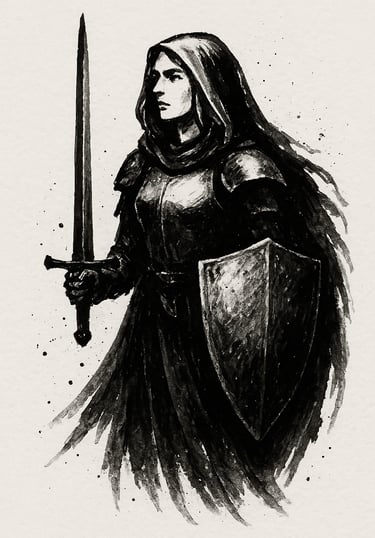

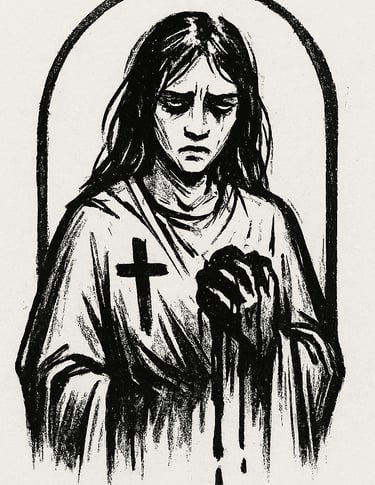

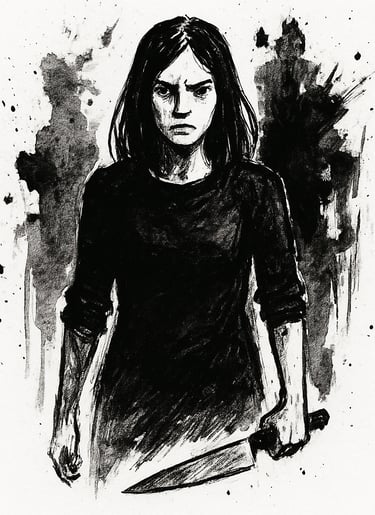

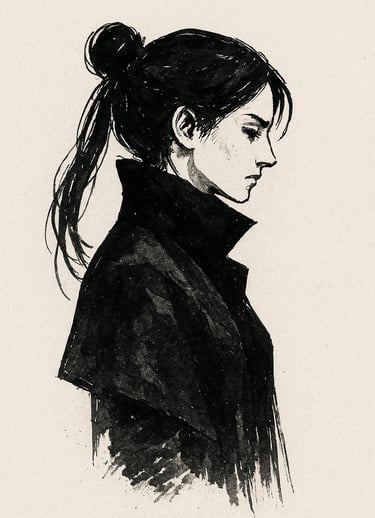

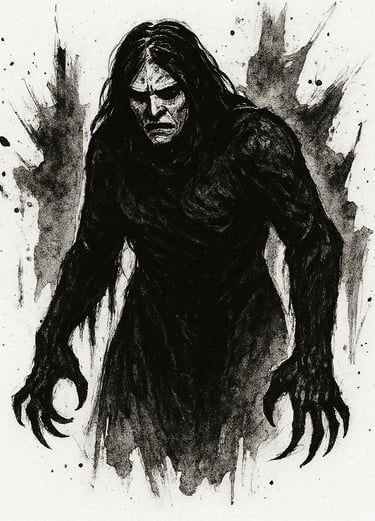


PART V — Manifesto
The assumption that female characters must be redeemable is not a reflection of narrative truth — it is a reflection of market anxiety. Women are not being written “softer” because that is what readers want, but because the industry has pre-emptively moralised femininity in fiction and installed a filter between the author and the audience.
Male characters are allowed to be ethically catastrophic without cure or apology.
Female characters are only allowed to approach that territory under supervision.
That is not an artistic condition — it is a constraint.
And constraints of that kind degrade literature.
A morally grey heroine should not have to perform innocence to be admitted.
She should not have to bleed publicly so the reader forgives her.
She should not have to arc toward redemption to justify her existence.
She should not be made didactic when a man in the same configuration would be called iconic.
Fiction does not need more good women. It needs more true women — women whose moral range is not pre-censored on behalf of an audience that has never been allowed to see what it can tolerate.
If the industry can trust readers with Patrick Bateman, Dexter, and Walter White,
it can trust them with women who are not curated into penitence.
Stop fixing her. Stop defending her. Stop sanitising her.
Write her as she would act — not as the market fears she might be received.
If you want to read fiction built on this ethic — not softened, not apologetic, not redeemed — that is exactly what I write.
Join my list below to get early access to chapters, worldbuilding notes, and launch details when my novel releases.
